
January Awoɔ Bo: Wɔde Garnet refi Afe no ase
Sɛ w’awoda fi afe no ase a, w’ani begye sɛ wubehu sɛ January awoda bo no ne garnet. January yɛ ɔsram a wofi ase foforo na wonya daakye ho adwempa; garnet da saa hann ne baabi a ebetumi aba yi adi saa ara.
January din no fi Janus, Romafo anansesɛm mu mfiase ne awiei nyame no mu. Janus wɔ anim abien, na emu biara hwɛ nea atwam anaa daakye.
Wɔ saa kwan no so no, yɛbɛhwɛ January awo abo garnet a wɔde di dwuma wɔ amanne kwan so a ɛwɔ ntease ahorow, abakɔsɛm, ne sɛnea wɔde di dwuma no. Yɛde nnɛyi akwan foforo bi nso bɛba a wubetumi de akɔ wo daakye mu de adi January akokoaa a wobɛyɛ ho afahyɛ!
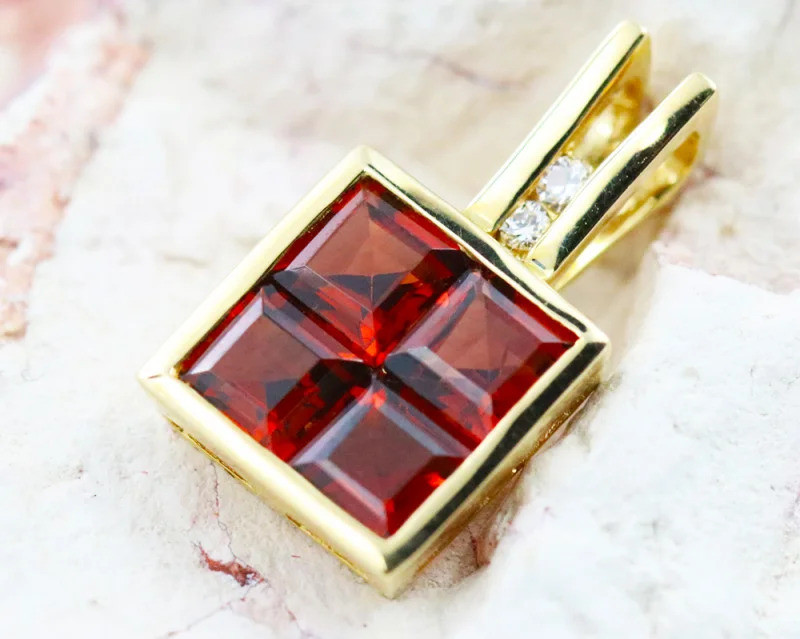
January Awobo Nkyerɛase: Garnet Nsɛnkyerɛnnede
Sɛ yɛde sɛnkyerɛnne kwan so de fi ase a, mpɛn pii no January awo abo garnet no gyina hɔ ma adamfofa, ɔhyew, ne akɔnnɔ.
Nea January ɔbo a ɛsom bo fã yi kyerɛ foforo ne ahobammɔ, a wɔde di dwuma wɔ tete mmere mu.
Abakɔsɛm & Amammerɛ mu Nkyerɛase a Ɛfa January Awo Abo Garnet Ho
January awobo no yɛ kɔkɔɔ a ɛhyerɛn a agye din kɛse nanso ɛwɔ ahorow ahorow nso, efi pink anaa borɔdɔma so kosi ahabammono anaa kɔkɔɔ so.
Garnet no nso yɛ atetesɛm mu ayeforohyia afe a ɛto so 2 aboɔden abo.
Edin “garnet” no fi mfinimfini mmere mu Latin asɛmfua granatus , a ɛkyerɛ “akutu” mu efisɛ garnet ahwehwɛ kɔkɔɔ nketewa te sɛ granatu aba.
 Mfonini a ɛwɔ atifi hɔ no: Helafo garnet ne agate kɔnmuade ne asomuade a wɔkyerɛw no afeha a ɛto so 1 A.Y.B Mfonini no fi: Metropolitan Museum of Art , Ɔmanfo de
Mfonini a ɛwɔ atifi hɔ no: Helafo garnet ne agate kɔnmuade ne asomuade a wɔkyerɛw no afeha a ɛto so 1 A.Y.B Mfonini no fi: Metropolitan Museum of Art , Ɔmanfo de
Garnets wɔ Tete Mmere mu
Wɔakyerɛw sɛnea wɔde garnet dii dwuma no fi Kɔbere Mmere no mu (bɛyɛ 3300 A.Y.B. kosi 1200 A.Y.B.), bere a wɔde January awobo yi dii dwuma wɔ abrasives, amusiei, ne ahemfo agude mu no. Tetefo nso de garnet dii dwuma sɛ agyan de bɔ wɔn ho ban bere a wɔrekɔ ɔko na wɔretu kwan no, na na wogye di sɛ aboɔden abo no de hann bɛba sum mu.
Ná tete Misrifo faraonom hyɛ garnet kɔnmuade kɔkɔɔ wɔ nkwa ne owu mu, na wɔde July awo abo yi siee wɔn. Ná Misrifo gye di sɛ garnet yɛ nkwa ho sɛnkyerɛnne.
Wɔ tete Roma , na aban mpanyimfo de garnet signet nkaa a wɔasen guu nkrataa so. Ná Romafo a wɔretu kwan, wɔrekɔ ɔko, anaa wɔrekwati nyarewa te sɛ ɔyaredɔm no de garnet bedi dwuma de abɔ wɔn ho ban.
Tete Helafo anansesɛm biako a ɛfa garnet mfiase ho no fa Persephone, afifide nyamewa a agye din a Hades, asaman nyame, faa no na ɔwaree no no ho.
Bere a Zeus ka kyerɛɛ Hades sɛ ɔmfa Persephone nsan mma no, Hades maa Persephone granate akutu. Bere a odii granate aba no, na ɔde ne ho bata Hades ho daa, na ɔde afe biara fã (osutɔbere kosi awɔw bere) tra asaman mu.
Sɛnea ɛte no, na granate akutu ne garnet a ɛte sɛ nea ɛte saa no bata adɔfo a wɔatew wɔn ho, daa nkwa, ne Asase so sanba kyinhyia ahorow ho.
Tete Edin a Wɔde Ma Garnets
Ansa na “garnet” reba no, na tete nsɛmfua afoforo a wɔde frɛ garnet (ne aboɔden abo kɔkɔɔ a ɛte saa ara) no bi ne:
Hela asɛmfua anthrax (a efi Hela nyansapɛfo Theophrastus mu), a ɛkyerɛ “ogyaframa a ɛhyerɛn” .
Latin asɛmfua carchedonius (a efi Roma kyerɛwfo Petronius mu), a efi Hela din Carchedonia a ɛkyerɛ Carthage, tete Foinike kurow bi mu
Arabic kasa mu yaqut , a wɔde yɛ garnet, ruby , anaa safir
Sanskrit ne Hindu kasa mu raktamani , a ɛkyerɛ “abohene a ɛsom bo a ɛte sɛ mogya kɔkɔɔ” .
Latin asɛmfua carbunculus anaa carbuncle (a efi Roma nhomanimfo Pliny Ɔpanyin), a ɛkyerɛ “fango a ɛrehyew” .
Garnet din ahorow pii a edi kan no kaa wɔn su horow a ɛte sɛ ogya ho asɛm: kɔla kɔkɔɔ, ɛhyerɛn, ne ɔhyew a ɛko tia.
Nanso, na wɔfrɛ abo kɔkɔɔ pii tete “carbuncles,” enti ɛyɛ den sɛ wubehu sɛ ebia na ne nyinaa yɛ garnet ampa anaa. Ɛnnɛ, ɛtɔ mmere bi a wɔda so ara frɛ garnet cabochons kɔkɔɔ no carbuncles.
 Mfonini a ɛwɔ atifi hɔ: Afeha a ɛto so 5 (Mfinimfini Mmere Mfiase) Ostrogothic (Roma bere so Germanfo) garnet ring a wɔakyerɛw so hatching | Mfonini no fi: Walters Art Museum, Ɔmanfo de
Mfonini a ɛwɔ atifi hɔ: Afeha a ɛto so 5 (Mfinimfini Mmere Mfiase) Ostrogothic (Roma bere so Germanfo) garnet ring a wɔakyerɛw so hatching | Mfonini no fi: Walters Art Museum, Ɔmanfo de
Nyamesom & Honhom mu Nkyerɛase
January awobo garnet no wɔ nyamesom anaa honhom fam ntease ahorow ne ayaresa su ahorow.
Kristosom : .
Bible no ka garnet ho asɛm, sɛnea wɔkyerɛ ase fii Hebri asɛmfua nophek , mu wɔ asɔfo anaa adehye ahosiesie mu ne kanea a ɛkyerɛ kwan wɔ Noa Adaka no so.
Bible ho abenfo binom kyerɛɛ aboɔden abo a wɔaka ho asɛm yi ase, na wɔtwee adwene sii aboɔden abo no kɔla a ɛte sɛ mogya ne tumi a ɛhyerɛn wɔ sum mu no so, de yɛɛ Yesu Kristo afɔrebɔ, Onyankopɔn ɔsoro asɛm, ahofama ma Onyankopɔn, anaa Kristofo honhom fam nneɛma nyinaa ho sɛnkyerɛnne.
Ná asɔfo a wɔwɔ Mfinimfini Mmere no mu (bɛyɛ afe 475 kosi 1450 Y.B.) taa hyɛ aboɔden abo a wɔfrɛ no garnet. Ná Katolek ɔsɔfopɔn nkaa no gyina hɔ ma wɔn nyamesom tumidi ne sɛnkyerɛnne kwan so “aware” a wɔde ma asɔre no.
Kristofo nhomanimfo binom mpo kae sɛ sɛ obi we carbuncles a wɔde powder ayɛ a, ɛbɛma wanya tumi, atemmu a nidi wom, na wanyan honhom mu.
Abosonsomfo : .
Frankfo abosonsomfo te sɛ Childeric Migye dii sɛ aboɔden abo kɔkɔɔ te sɛ garnet yɛ ɔdɔ, nkwa, ne awo ho sɛnkyerɛnne, na wɔde yɛ anyame te sɛ Eros, Freia, ne Isis adwini.
Nkramofoɔ : .
Kur’aan no ka ɔsoro ason ho asɛm wɔ owu akyi asetra mu, na wɔde garnet ne rubi na ɛyɛɛ ɔsoro a ɛto so asia no. Aboɔden abo a ɛwɔ Kur’aan mu no taa yɛ Allah nhyira ho sɛnkyerɛnne.
Hindusom : .
Hindufo ahoɔden ayaresafo de garnet di dwuma sɛ ntini anaa abotiri chakra ɔbo . Vedic nsoromma mu hwɛfo nso de garnet kɔkɔɔ bata “Rahu” anaa Mars, ahoɔden ne ɔko okyinnsoromma no ho, na wogye di sɛ garnet siw Mars nkɛntɛnso bɔne ano.
Sɛ yɛka ne nyinaa bom a, na garnets kura ntease pii, ma ayaresa ne opira nyinaa.
Ná Amerikafo Ankasa ne Asiafo mmusuakuw binom de garnet kɔkɔɔ bedi dwuma sɛ atuo de ahwɛ ahu sɛ nneɛma asɛe kɛse, bere a Mfinimfini Mmere no mu nnuruyɛfo de garnet sa nyarewa ahorow, a atiridiinini, akuru, jaundice, ne bubonic ɔyaredɔm mpo ka ho.
Asase Ho Adesua ne Nea Ɛwɔ January Abo Garnet no mu
Garnets yɛ aboɔden abo kuw kɛse bi a ɛyɛ den ankasa a dua bi wɔ akuw ahorow mu. Garnet ahorow abien a ɛyɛ aboɔden abo a ɛtoatoa so a ɛtrɛw ne pyralspite ne ugrandite:
Pyralspite : Silikate a aluminium pii wom; Nnomaa ahorow a wɔfrɛ no pyrope , almandine , ne spessartite na ɛwɔ mu
Ugrandite : Silikates a calcium pii wom; Ɛwɔ nnomaa ahorow a wɔfrɛ no uvarovite , grossular , ne andradite
Garnet ahorow pii yɛ saa ahorow no afrafra, mpɛn pii no ɛwɔ ntoatoaso koro no ara mu nanso ɛtɔ mmere bi a ɛtwam wɔ ntoatoaso no ntam.
Momma yenni kan nkɔ pyralspite ahorow a ɛwɔ January awo abo yi mu no so.
Pyrope a wɔde yɛ adwuma
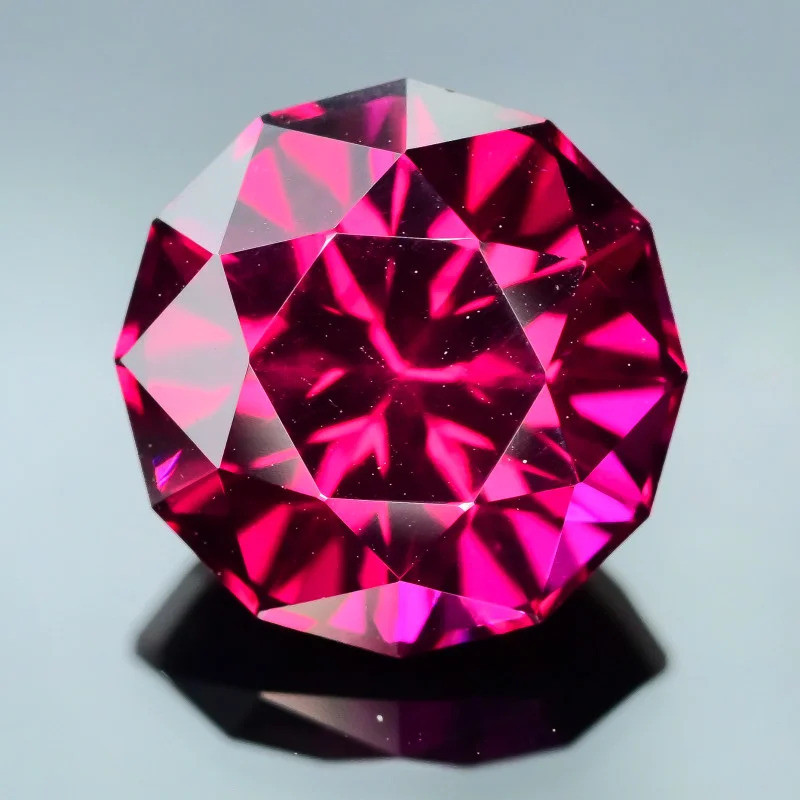 Mfonini a ɛwɔ atifi hɔ no: Umbalite garnet a ɛwɔ afã horow a efi Mozambique
Mfonini a ɛwɔ atifi hɔ no: Umbalite garnet a ɛwɔ afã horow a efi Mozambique
Garnet kɔkɔɔ a wonim no yiye sen biara, pyrope garnets yɛ magnesium aluminium silicates a agye din esiane mogya kɔkɔɔ anaa granate akutu kɔla nti. Pyropes nkutoo ne garnet a ɛyɛ kɔkɔɔ bere nyinaa, ɛwom sɛ ɛsono sɛnea ɛyɛ pɛpɛɛpɛ wɔ nea ɛwɔ ase a ɛyɛ kɔkɔɔ, borɔdɔma, tuntum, ne bruu no ho de.
Pyrope awo abo ahorow bi ne:
Chrome Pyrope a wɔde yɛ adwuma
Pastel Pyrope a wɔde yɛ nneɛma
Mozambique Nnua a Wɔde Yɛ Nneɛma
Nsoromma Garnet
Umbalitefoɔ
Bobe a wɔfrɛ no Garnet
Almandine na ɔkyerɛwee
 Mfonini a ɛwɔ atifi hɔ no: Rhodolite garnet a ɛwɔ afã horow
Mfonini a ɛwɔ atifi hɔ no: Rhodolite garnet a ɛwɔ afã horow
Almandine yɛ garnet ahorow foforo a agye din kɛse. Saa dade aluminium silicate yi yɛ den kakra sen pyrope. Ne kɔla ahorow fi kɔkɔɔ a emu dɔ ne kɔkɔɔ a ɛyɛ kɔkɔɔ so kosi bruu a ɛyɛ bruu so.
Almandine ahorow no bi ne:
Mozambique Nnua a Wɔde Yɛ Nneɛma
Rhodolite a wɔfrɛ no Rhodolite
Malaya (Malaia) Nnua a wɔfrɛ no Garnet
Nsoromma Garnet
Umbalitefoɔ
Bobe a wɔfrɛ no Garnet
Proteus Garnet a wɔfrɛ no Garnet
Spessartite na ɔkyerɛwee
 Mfonini a ɛwɔ atifi hɔ no: Mandarin garnet a ɛwɔ afã horow
Mfonini a ɛwɔ atifi hɔ no: Mandarin garnet a ɛwɔ afã horow
Spessartite garnets ne pyralspite ahorow a ɛyɛ soronko kɛse, a wonim wɔn sɛ ɛyɛ kɔkɔɔ kosi borɔdɔma na ɛhyerɛn kɛse. Manganese aluminium silicate yi ahorow no bi ne:
Malaya (Malaia) Nnua a wɔfrɛ no Garnet
Kashmirfo kasa mu
Ɔkraman Aniwa Spessartite Garnet
Umbalitefoɔ
Afei yɛbɛkɔ ugrandite ahorow no mu!
Uvarovite a wɔfrɛ no Uvarovite
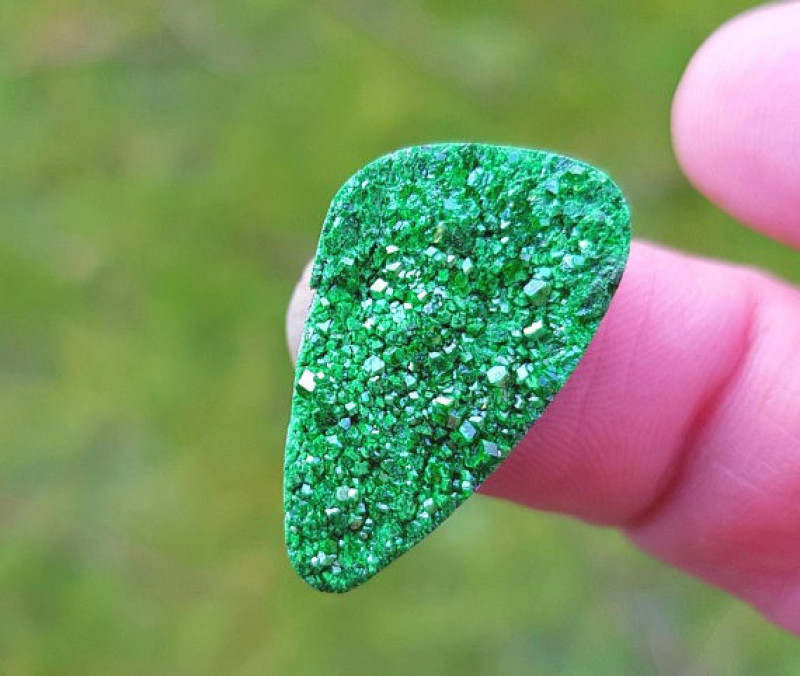 Mfonini a ɛwɔ atifi hɔ no: Uvarovite garnet druzy
Mfonini a ɛwɔ atifi hɔ no: Uvarovite garnet druzy
Uvarovite yɛ calcium chromium silicate ne garnet a ɛyɛ aboɔden abo a ɛho yɛ na sen biara. Ɛsan nso ne garnet biako pɛ a ɛyɛ ahabammono bere nyinaa, efi nea ɛyɛ mfinimfini kosi tuntum.
Grossular a ɛyɛ den
 Mfonini a ɛwɔ atifi hɔ no: Dwetɛ mpɛtea a wɔde tsavorite garnets a ɛyɛ ahabammono ne cubic zirconia ayɛ
Mfonini a ɛwɔ atifi hɔ no: Dwetɛ mpɛtea a wɔde tsavorite garnets a ɛyɛ ahabammono ne cubic zirconia ayɛ
Grossular garnets yɛ calcium aluminium silicates, na ɛtɔ mmere bi a dade si calcium ne aluminium no bi ananmu. Wonim wɔn sɛ wɔwɔ kɔla ahorow a ɛtrɛw sen biara ne nea enni kɔla ahorow a ɛyɛ aboɔden abo nkutoo.
Grossular garnet ahorow ne:
Ahemman no Garnet
Mint (anaa Merelani Mint) Garnet a wɔde yɛ nneɛma
Leuco Garnet na ɔkyerɛwee
Umbalitefoɔ
Ebinom bu hydrogrossular garnet sɛ grossular ahorow, nanso wogye ho akyinnye wɔ aboɔden abo ho animdefo mu.
Andradite na ɔkyerɛwee
 Mfonini a ɛwɔ atifi hɔ no: Sika kɔkɔɔ nkaa a wɔde demantoid garnet a ɛyɛ ahabammono ne abohene a ɛyɛ pink ayɛ
Mfonini a ɛwɔ atifi hɔ no: Sika kɔkɔɔ nkaa a wɔde demantoid garnet a ɛyɛ ahabammono ne abohene a ɛyɛ pink ayɛ
Andradites yɛ calcium iron silicates a ɛpete kɛse soronko (ɛhyerɛn kɔla) na ɛhyerɛn (hann fitaa a ɛhyerɛn). Ɛwom sɛ ɛnyɛ nea nkurɔfo ani gye ho na wɔn ho yɛ na sen mmoa ahorow afoforo de, nanso andradites wɔ ahorow bi a wɔhwehwɛ, te sɛ:
Kolofoni a wɔde yɛ adwuma
Nyankontɔn Garnet
Topazolite a wɔde yɛ aduru
Mali Garnet na ɔkyerɛwee
Saa ahorow no nyinaa boa ma nyankontɔn fɛfɛ a ɛyɛ garnet kɔla ne aniwa so nkɛntɛnso a ɛwɔ January awo abo yi mu no ba!
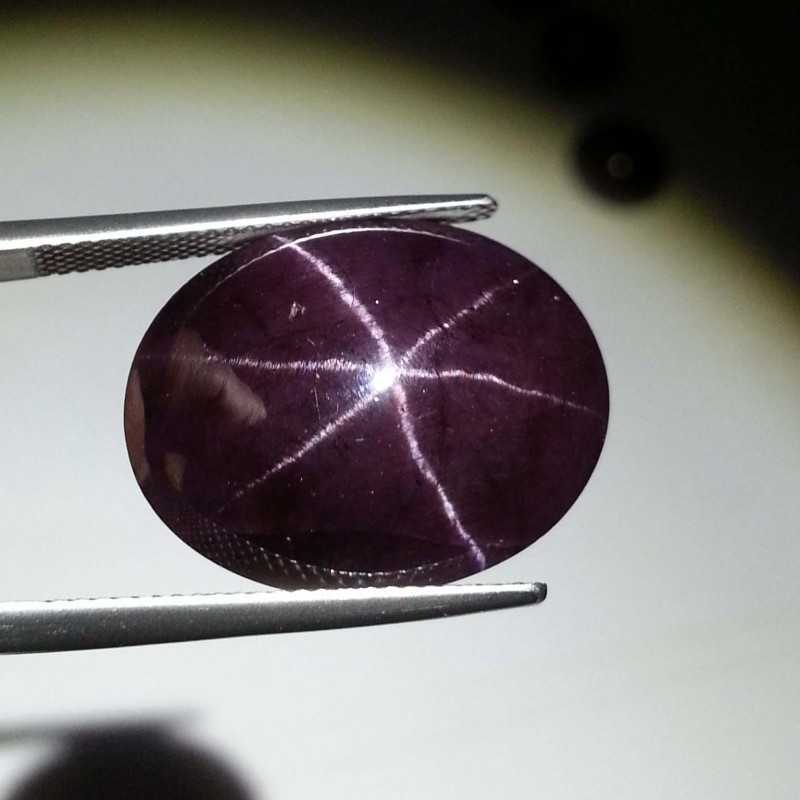 Mfonini a ɛwɔ atifi hɔ no: Nsoromma garnet a ɛyɛ kɔkɔɔ
Mfonini a ɛwɔ atifi hɔ no: Nsoromma garnet a ɛyɛ kɔkɔɔ
Kɔla ne Nsonsonoe Ahorow a Ɛkyere Nnipa
Kɔla bɛn na January awobo no yɛ? Garnet yɛ kɔkɔɔ a nkurɔfo ani gye ho kɛse, nanso nokwarem no, ɛwɔ kɔla ahorow pii, na ahorow bi mpo wɔ nneɛma soronko a ɛma wotumi hu ade.
Garnets Sɛnea Kɔla Teɛ
Ɛkame ayɛ sɛ January awobo kɔla betumi ayɛ kɔla biara, ɛwom sɛ bruu ho yɛ na koraa na ɛwɔ ahorow bi a ɛsakra kɔla nkutoo mu de.
Nneɛma ahorow a agye din sen biara ma January awobo yi kɔla biara ne:
Kɔkɔɔ : Pyrope
Orange : Mandarin a wɔde yɛ aduru a wɔfrɛ no Garnet
Kɔkɔɔ : Mali garnet
Green : Demantoid anaa tsavorite
Purple : Umbalite anaa bobe aba a wɔfrɛ no garnet
Pink : Nnuru a wɔfrɛ no Rhodolite
Kɔla a enni : Leuco garnets (grossular) nkutoo .
Tuntum : Melanite a ɛyɛ fɛ
Sɛ kɔla ahorow da nkyɛn a, garnet January awo abo nso wɔ hɔ a ɛwɔ aniwa so nkɛntɛnso soronko.
Garnets a Ɛyɛ nwonwa wɔ aniwa so
Garnet awo abo a ɛwɔ aniwa mu nneɛma bi ne:
Star Garnet : Ɛda “nsoromma” a ɛwɔ hann a ɛdannan denam nsoromma mu hwɛ so a ɛwɔ mframa 4, 6, anaa 12 mpo adi; Mpɛn pii no, ɛyɛ tuntum, bruu, anaa tuntum-kɔkɔɔ tuntum nanso ebetumi ayɛ kɔkɔɔ kosi kɔkɔɔ ahorow ahorow a kɔkɔɔ-tuntum ne tuntum-kɔkɔɔ ka ho
Cat’s Eye Garnet : Ɛda hann a ɛte sɛ ɔkraman aniwa adi denam chatoyancy so esiane nhama a ɛte sɛ nnade anaa nhama a ɛyɛ tokuru a ɛka ho a ɛne ne ho di nsɛ nti; Bere nyinaa spessartite
Color-Change Garnet : Sesa kɔla wɔ kanea ahorow mu, mpɛn pii no UV (owia hann) ne hann a ɛyɛ hyew; Mpɛn pii no, ɛyɛ kɔkɔɔ kosi kɔkɔɔ anaa kɔkɔɔ kosi ahabammono; Nea ɛsom bo kɛse ne bruu kosi kɔkɔɔ anaa kɔkɔɔ
Sɛ aniwa a ɛyɛ nwonwa da nkyɛn a, garnet nso wɔ ayaresa a ɛyɛ nwonwa.
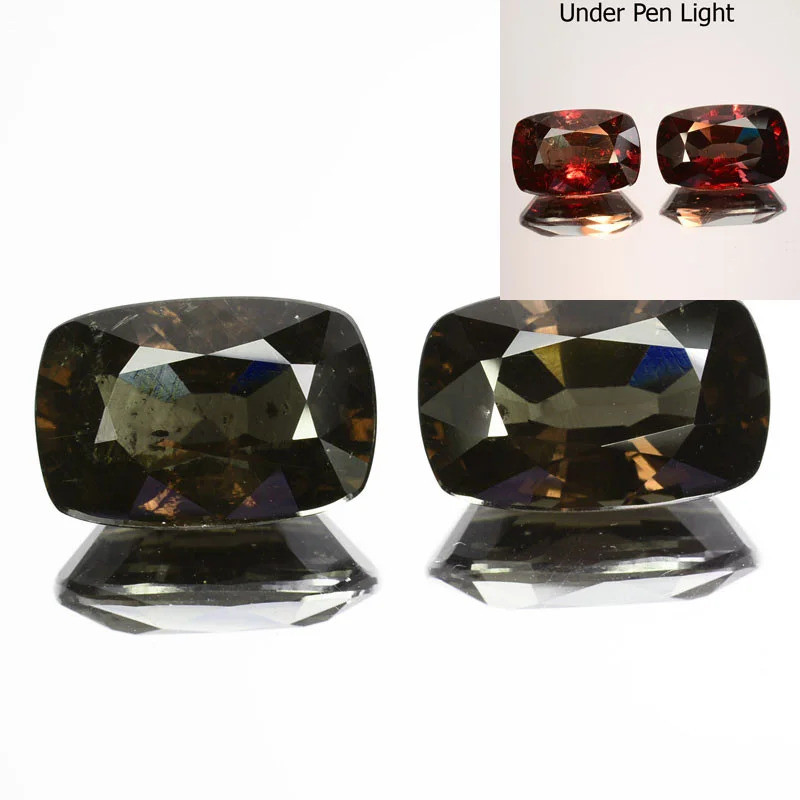 Mfonini a ɛwɔ atifi hɔ no: Garnet a ɛwɔ afã horow a ɛsakra kɔla
Mfonini a ɛwɔ atifi hɔ no: Garnet a ɛwɔ afã horow a ɛsakra kɔla
Garnet Metaphysical Nneɛma a Ɛwɔ Hɔ
January awobo a wɔde di dwuma sɛ ɔbo a wɔde sa yare no akɔ so fi tete akɔ nnɛyi ahwehwɛ ayaresa nneyɛe mu.
Garnet de di dwuma wɔ metaphysics mu no pii fa abusuabɔ a ɛda mogya ne koma, nkwa, ahoɔden, ne ɔdɔ ho sɛnkyerɛnnede ahorow ntam no ho.
Wɔ honam fam no, wɔkyerɛ sɛ garnet awo abo ma mogya no tu mpɔn, ɛhyɛ koma no den, na ɛma awuduru tew nipadua no ho te sɛ nea mogya ankasa yɛ wɔ yɛn nipadua mu no.
Wɔ ahoɔden ayaresa mu no, wɔde garnets di dwuma de kari pɛ wɔ chakra ahorow nyinaa mu , na ɛma ahoɔden sen fa obi honam fam, honhom fam, ne nkate fam nipadua nyinaa mu kwa.
Wɔ nkate fam no, wɔka sɛ January awo abo garnet no ma:
Gyidie
Ɔpɛ
Nsiyɛ
Awo a wɔde ma
Nketesie
Wɔn a wɔwɔ abusuabɔ mu no betumi anya mfaso afi tumi a wɔkyerɛ sɛ garnet wɔ sɛ ɛbɛboa wo ma wo ho atɔ wo kɛse sɛ wobɛyɛ mmerɛw, ayi nkate bɔne te sɛ abufuw anaa abufuw afi hɔ, na ama nkate a ɛne sɛ wobɛpɛ wɔn ho wɔn ho no ayɛ kɛse.
Zodiac Abo a wɔde bɛyɛ January
Nsoromma mu hwɛ ho sɛnkyerɛnne abien hyɛ January awobo bere no ase: Capricorn fi December 22 kosi January 19 ne Aquarius fi January 20 kosi February 18.
Garnet sɛnkyerɛnne kwan so ade wɔ adamfofa, ɔhyew, ne akɔnnɔ mu no ne sɛnea wɔde di dwuma sɛ Aquarius awobo no hyia. Wɔkyerɛ sɛ mframa ho sɛnkyerɛnne Aquarians yɛ nnipa mmoa a wɔn ani gye ho a wobu adamfofa ne mpɔtam hɔ dansi sɛ ɛsom bo.
Garnets nso betumi ayɛ ahotoso ne ahofama ho sɛnkyerɛnne, ɔdɔ anaa ɔkwan foforo so, a wɔde abodin “Ahofama Ɔbo” ayɛ ho sɛnkyerɛnne. Eyi bata garnet ho yiye sɛ Capricorn awobo. Capricorn yɛ akannifo a wɔde wɔn ho ama na wotumi de ho to wɔn so, wɔ adwumam ne fie nyinaa.
Garnet akyi no, January awo abo afoforo kakraa bi wɔ hɔ a ɛsɛ sɛ wuhu ho asɛm.
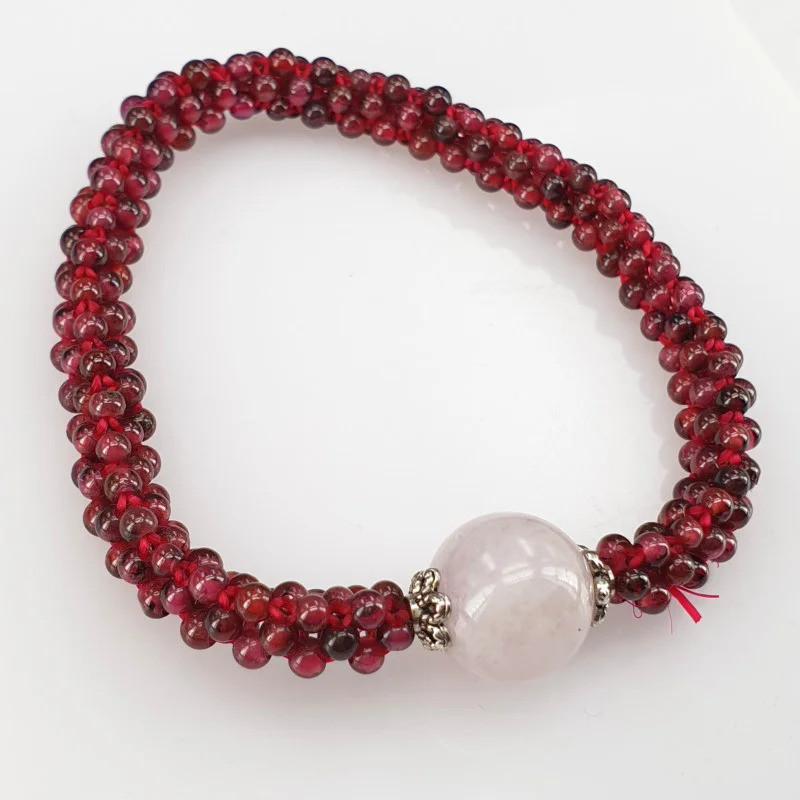 Mfonini a ɛwɔ atifi hɔ no: Abɔso a wɔde nhwiren ayɛ a wɔde rose quartz ne garnet kɔkɔɔ ayɛ
Mfonini a ɛwɔ atifi hɔ no: Abɔso a wɔde nhwiren ayɛ a wɔde rose quartz ne garnet kɔkɔɔ ayɛ
January Awo Abo a Wɔde Yɛ Adwuma Foforo
Awo abo kɔla a wɔtaa de di dwuma wɔ January mu ne kɔkɔɔ anaasɛ ne nsakrae bi, te sɛ pink anaa kɔkɔɔ.
January awobo titiriw a wɔde si garnet ananmu ne rose quartz , a ɛyɛ hare a ɛboa garnet ogya. Saa quartz a ɛyɛ pink yi taa yɛ nufusu na ɛyɛ hann. January awobo a wɔde sesa no nso yɛ amansan dɔ ne gye a wogye tom no ho sɛnkyerɛnne.
January awobo a ɛyɛ ahintasɛm a egyina Tibetfo nsoromma mu hwɛ so no yɛ emerald . Ɛwom sɛ ɛsono nea ɛyɛ nwonwa wɔ kɔla a ɛyɛ ahabammono mu sen sɛ ɛbɛyɛ kɔkɔɔ de, nanso emerald sɛ January awo abo da ankorankoro nyin ne awo foforo a ɛbata afe foforo ho ho sɛnkyerɛnne adi.
Sɛ wɔde toto garnet ho a, rose quartz ntumi ntra hɔ nkyɛ nanso wotumi nya pii. Abo abien no yɛ nkabom kɛse wɔ January awo abo agude mu.
Mpɛn pii no, emerald yɛ nea ɛyɛ den sen garnet, nanso mpɛn pii no ne bo yɛ den bere a emu nna hɔ sua .
January Awobo Akyɛde a Wɔayɛ no Ankorankoro
Ɛwom sɛ ebinom bu awo abo ho adwene no sɛ aguadi ho anifere ara kwa de, nanso awo abo kura abakɔsɛm a ɛho hia akyɛ. Nokwarem no, adwene a ɛne sɛ wɔde awo abo wɔ ɔsram biara mu no fi Bible nkyerɛwee ahorow mu.
Mpɛn pii no, awo abo ne ahwehwɛ a edi kan a nkurɔfo hu. Wosusuw sɛ ɛde ahobammɔ ne anigye ba nea ɔhyɛ no so, nanso wɔ honhom fam tebea a ɛnyɛ kɛse mu no, awo abo yɛ asetra ho afahyɛ.
Sɛ́ ebia wobɛtɔ w’ankasa wo awo abo anaasɛ wobɛma wo dɔfo bi akyɛde no, akwan horow wɔ hɔ a wobɛfa so de January awo abo adi dwuma:
Sɛ́ aboɔden abo kɔnmuade anaa asomuade biako
Wɔ agude a wɔde ɔdɔfo (ɔdɔfo) awobo (abobo) ayɛ so .
Wɔ cufflinks so
Sɛ́ ring set a wɔaboaboa ano no fã
Edin krataa a wɔayɛ ama obiara a wɔde siesie
Sɛnea wɔasen (anaasɛ raw crystal) dan mu nneɛma
Nsɛm a wɔahyehyɛ no kɔ so, enti yɛ adebɔ ho nhyehyɛe! Ne nyinaa akyi no, ɛyɛ w’awobo, enti wosow no sɛnea wopɛ biara.
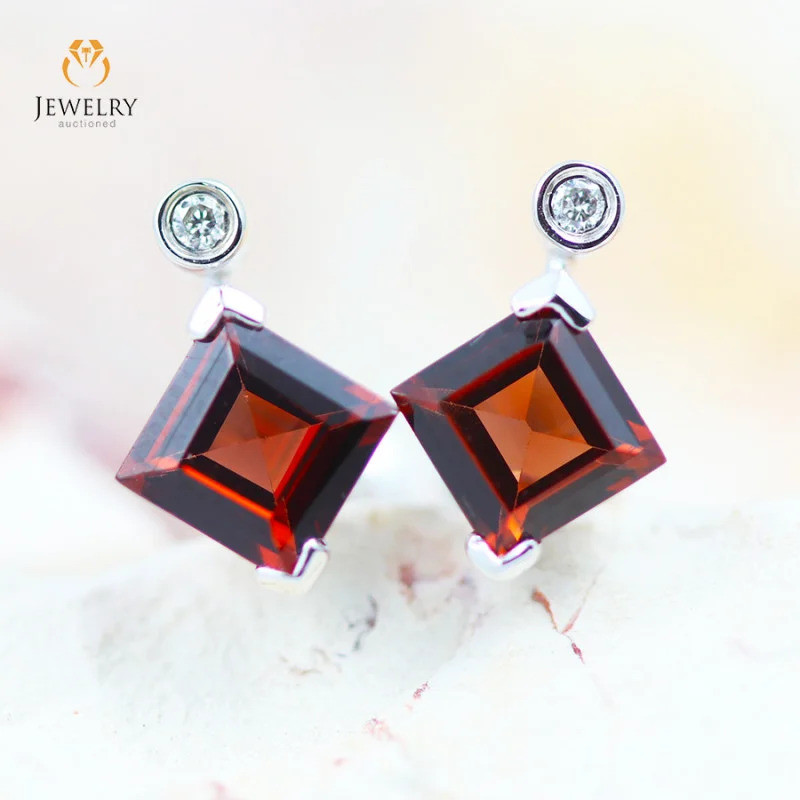 Mfonini a ɛwɔ atifi hɔ no: Sika kɔkɔɔ asomuade fitaa a wɔde garnet kɔkɔɔ ne abohene fitaa ayɛ
Mfonini a ɛwɔ atifi hɔ no: Sika kɔkɔɔ asomuade fitaa a wɔde garnet kɔkɔɔ ne abohene fitaa ayɛ
Fa January Awo Abo Di Wo Foforo no ho afahyɛ!
Sɛ woyɛ January akokoaa a, wunim sɛ wohyerɛn sɛ afe no mfiase ne daakye hann ho sɛnkyerɛnne — ɛsɛ sɛ w’awobo no da ɛno nso adi! Sɛ́ ebia wo ne garnet a ɛyɛ fɛ a enni bere mu anaasɛ ɔkwan foforo te sɛ rose quartz kɔ no, nea ɛho hia ne sɛ wowɔ awobo a ɛhyɛ wo ho afahyɛ.
搜尋Gemstone Encyclopedia
相關拍賣
相關文章
Ɔkwan bɛn so na wɔyɛ Sikakɔkɔɔ nnua? Nuggets dodow no ara ba bere a Sika kɔkɔɔ a wɔanwene no yɛ nsu na ɛkɔ mpaapaemu ne mpaapaemu mu wɔ abotan a wɔagye no mu te sɛ aboɔden abo dodow a ɛba no.
15th Oct 2020
Grossular garnet yɛ garnet a ɛtaa yɛ ahabammono a ɛwɔ ahorow a agye din te sɛ hessonite ne tsavorite. Yɛbɛka grossular garnet nteaseɛ, ne boɔ, abakɔsɛm, ne agyapadeɛ ho asɛm wɔ akwankyerɛ yi mu.
5th Feb 2019
Spessartite yɛ garnet aboɔden abo a ɛyɛ borɔdɔma kosi bruu a wonim no sɛ ɛyɛ hyew kɛse, “mandarin” ahorow a ɛyɛ hyew, ne abɔde mu ahoɔfɛ. Sua spessartite garnet ntease, ne bo, ahorow ahorow, ne abakɔsɛm ho ade!
14th Jun 2017
最新的文章
Nnua a wɔde asonse a wɔasen a wɔsan frɛ no nhabannuru asonse no yɛ abɔde mu ade a wɔde si asono asonse ananmu, na wotwa fi Amerika Kesee Fam phytelephas nnuadewa mu nnuadewa mu wɔ abrabɔ pa mu. Sua mmɛw asonse ho ade nyinaa wɔ akwankyerɛ yi mu!
15th Jan 2026
Chrysanthemum nhwiren abo yɛ abɔde mu anwonwade a ɛwɔ calcite, celestite, anaa andalusite nhwiren fitaa bi a wɔde asisi limestone tuntum anaa atɛkyɛ abo so.
13th Jan 2026
Rainbow lattice sunstone yɛ feldspar ahorow a ɛwɔ optical nsunsuanso abiɛsa fɛfɛ a efi nneɛma ahorow a wɔde ka ho a ɛwɔ hɔ no mu ba. Ɛyɛ ogya kɔla display ne lattice nsusuwso ma ɛyɛ coletor abohene a wɔntaa nhu!
12th Jan 2026
文章類別
How To's is where you will find helpful articles from gem Rock Auctions on how to cut gemstones, select gemstones and buy gemstones.
9文章




